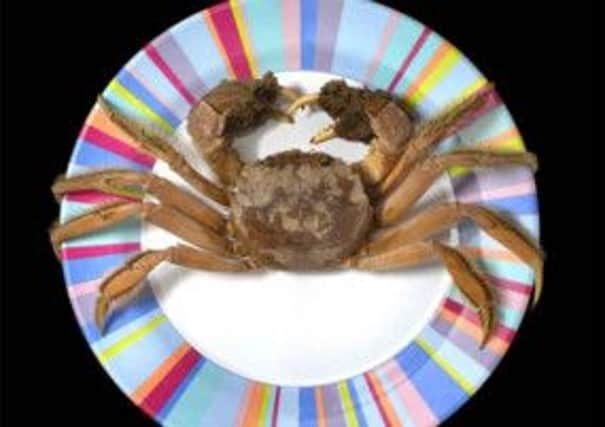Chinese mitten crab found in River Clyde


A female Chinese mitten crab has been discovered in the River Clyde near Dalmarnock.
John Clark, a bailiff for the Mid Clyde Angling Association, found the hand-sized creature while patrolling the river in search of illegal eel traps and passed it on to the Clyde River Foundation (CRF) for examination.
Advertisement
Hide AdAdvertisement
Hide Ad“Another invasive, non-native species appears to have arrived in the Clyde,” said Dr Willie Yeomans, catchment manager for CRF.
“This chance discovery by an angler poses a potentially significant ecological threat to the Clyde system, the biota of which is recovering from centuries of poor water quality and structural modification.
“Without putting too much emphasis on this one specimen, this finding potentially has very serious implications for river management under the EU Water Framework Directive.
“Our first priority is to follow up the finding with survey work to determine if there is an established population of mitten crabs in the Clyde and we are appealing for information from anyone who may have encountered these animals on the river.”
Dr Paul Clark, of the Natural History Museum, added: “An established River Clyde Chinese mitten crab population could pose an enormous environmental risk to the salmon and trout in this catchment.
“Recent research undertaken by Royal Holloway University of London and the Natural History Museum suggests mitten crabs can eat salmon and trout eggs.
“If this reported Clyde specimen came from a deliberate human release then the environmental authorities need to urgently consider what appropriate actions are required to prevent such introductions happening again in the future.”
The mitten crab, native to China, was introduced to Germany in 1912 and subsequently spread throughout Northern Europe.
Advertisement
Hide AdAdvertisement
Hide AdIt was recorded in the River Thames in 1935 and is now well-established there and in the Humber, Medway, Wharfe, Ouse and Tyne.
Experts believe the crab was first brought to the UK in a ship’s ballast water but the origin of the Clyde specimen is unclear.
Mitten crabs spend most of their life in freshwater, but return to salt water to breed.
They also travel well on land, which aids their spread.
They are included in the IUCN’s list of ‘100 of the worst alien species in the world’ as a result of their destructive impact on native biodiversity but their burrowing habits can also cause severe structural damage to riverbanks.
Adult mitten crabs, which can vary from grey-green to dark brown in colour with a body measuring up to 9cm across, can be identified by their distinctive furry, white-tipped claws.
A full report has been prepared for publication, and the remains have been sent to the Hunterian Museum at the University of Glasgow.